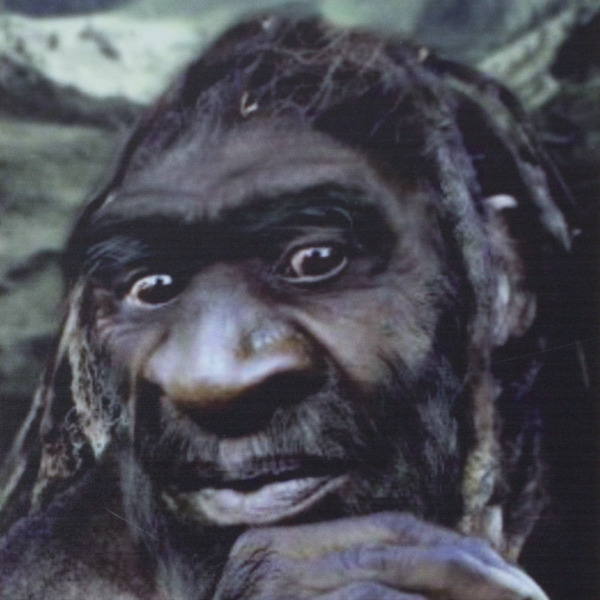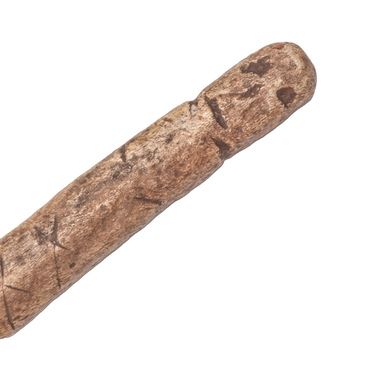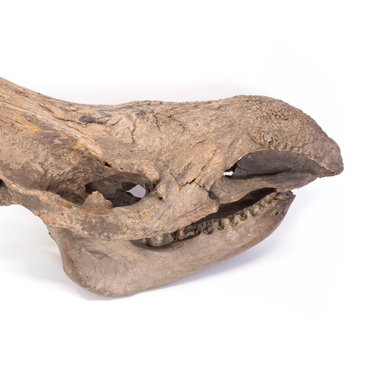The Denisovan man is not yet a fully studied species of ancient people. Fragments of his bones and teeth were discovered in 1984 in the Denisova cave in Altai. Excavations at this site continued over the next decades.
The finds were sent to the Max Planck Institute for Evolutionary Anthropology in Leipzig, Germany. There, the researchers conducted a genetic analysis and found that among the remains were fragments of Neanderthal bones. Thus, Altai became one of the easternmost points where representatives of this species lived. Previously, the bones of Neanderthals were found mainly on the territory of Europe.
German scientists also identified another type of ancient people, different from the Neanderthals, among the Altai finds — the Denisovan man. DNA studies have shown that the Denisovans were dark-skinned, dark-haired and dark-eyed. They had lived in Siberia at the same time as the Neanderthals, so these two species interbred.
Archaeologists studied the cultural layers in the cave and determined that the Denisovans were the indigenous population of the area, and the Neanderthals were aliens. They probably migrated to Altai from the western regions of Eurasia. When studying soil DNA samples using the latest methods, scientists found that representatives of the modern human species, sapiens, also lived in the Denisova cave. Thus, different types of people may have been in contact in Altai.
Despite the results of genetic studies, Russian anthropologists have not identified the Denisovan man as a full-fledged new species, since there are not enough finds for this yet. So far, only a few samples of remains have been found, and most of them are in Altai.
The museum presents a diagram created by the scientific portal Anthropogenesis.ru (Антропогенез.ру), according to which the Denisovan man was ranked as a ‘Heidelberg man’ (Homo heidelbergensis) — an intermediate link between Homo erectus and Homo sapiens. Modern people have descended from him.
Today, researchers have come to a general conclusion: the finds in the Denisova cave have given science more questions than answers. And new important discoveries related to these materials are still ahead.
The finds were sent to the Max Planck Institute for Evolutionary Anthropology in Leipzig, Germany. There, the researchers conducted a genetic analysis and found that among the remains were fragments of Neanderthal bones. Thus, Altai became one of the easternmost points where representatives of this species lived. Previously, the bones of Neanderthals were found mainly on the territory of Europe.
German scientists also identified another type of ancient people, different from the Neanderthals, among the Altai finds — the Denisovan man. DNA studies have shown that the Denisovans were dark-skinned, dark-haired and dark-eyed. They had lived in Siberia at the same time as the Neanderthals, so these two species interbred.
Archaeologists studied the cultural layers in the cave and determined that the Denisovans were the indigenous population of the area, and the Neanderthals were aliens. They probably migrated to Altai from the western regions of Eurasia. When studying soil DNA samples using the latest methods, scientists found that representatives of the modern human species, sapiens, also lived in the Denisova cave. Thus, different types of people may have been in contact in Altai.
Despite the results of genetic studies, Russian anthropologists have not identified the Denisovan man as a full-fledged new species, since there are not enough finds for this yet. So far, only a few samples of remains have been found, and most of them are in Altai.
The museum presents a diagram created by the scientific portal Anthropogenesis.ru (Антропогенез.ру), according to which the Denisovan man was ranked as a ‘Heidelberg man’ (Homo heidelbergensis) — an intermediate link between Homo erectus and Homo sapiens. Modern people have descended from him.
Today, researchers have come to a general conclusion: the finds in the Denisova cave have given science more questions than answers. And new important discoveries related to these materials are still ahead.



